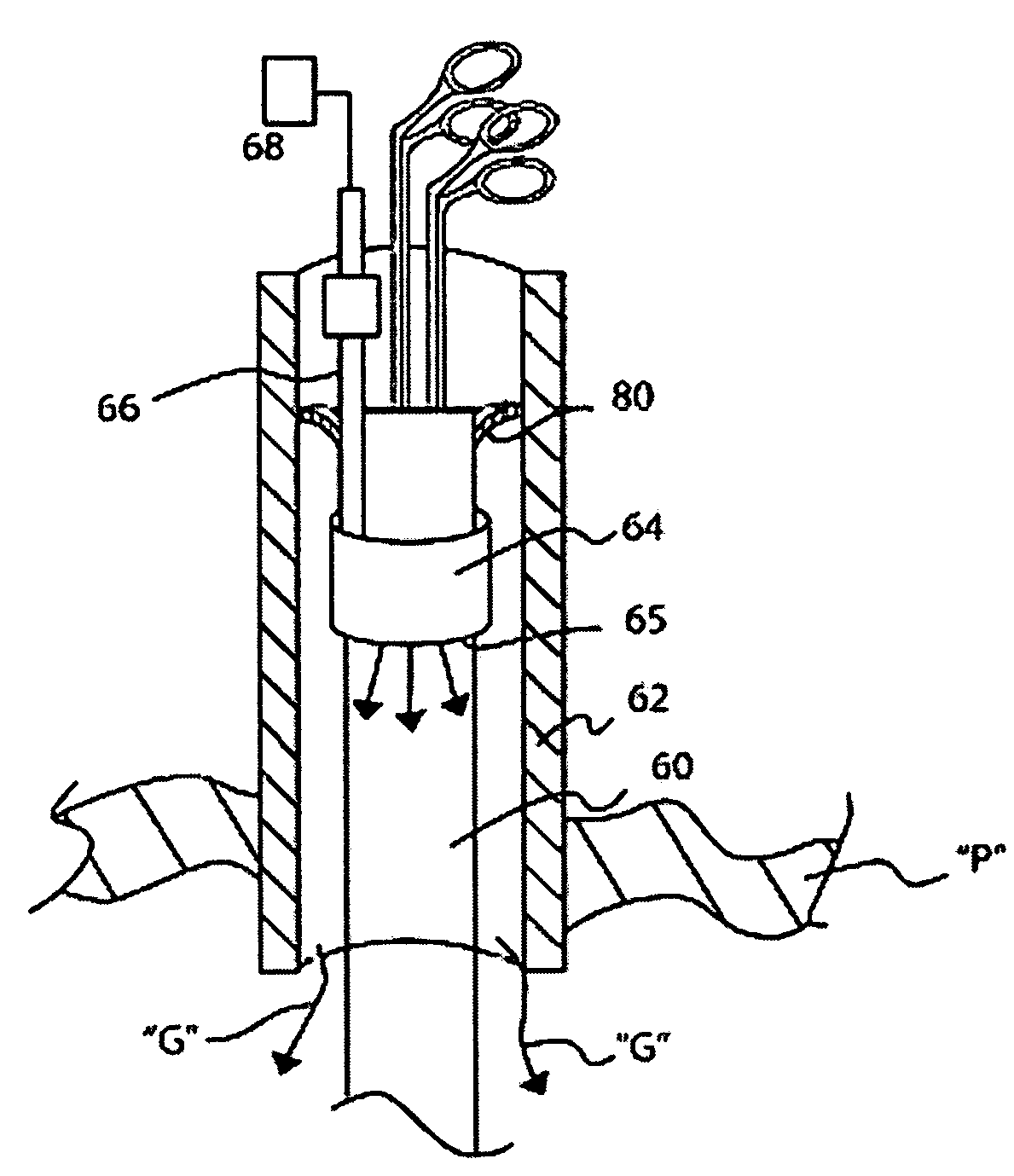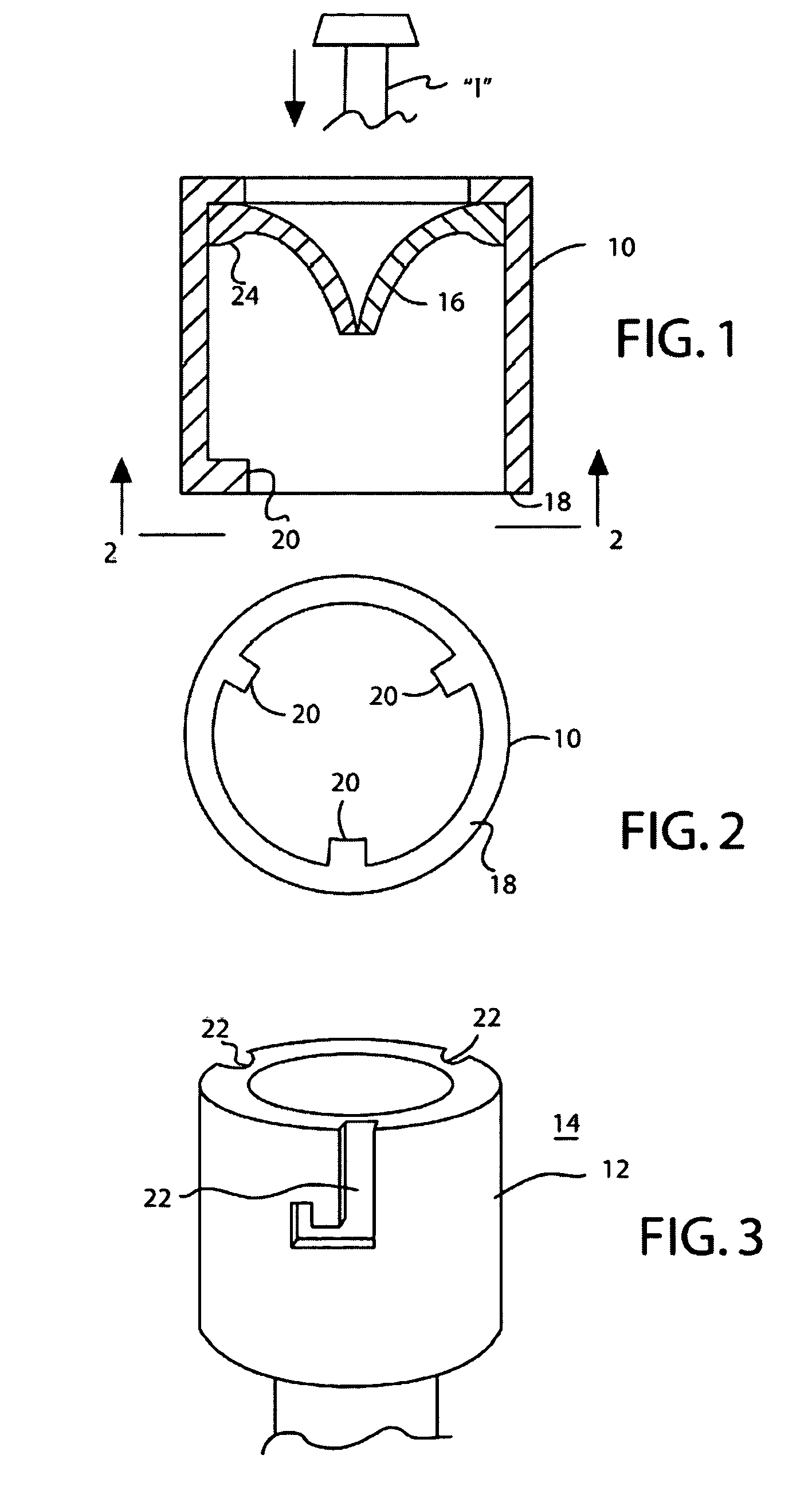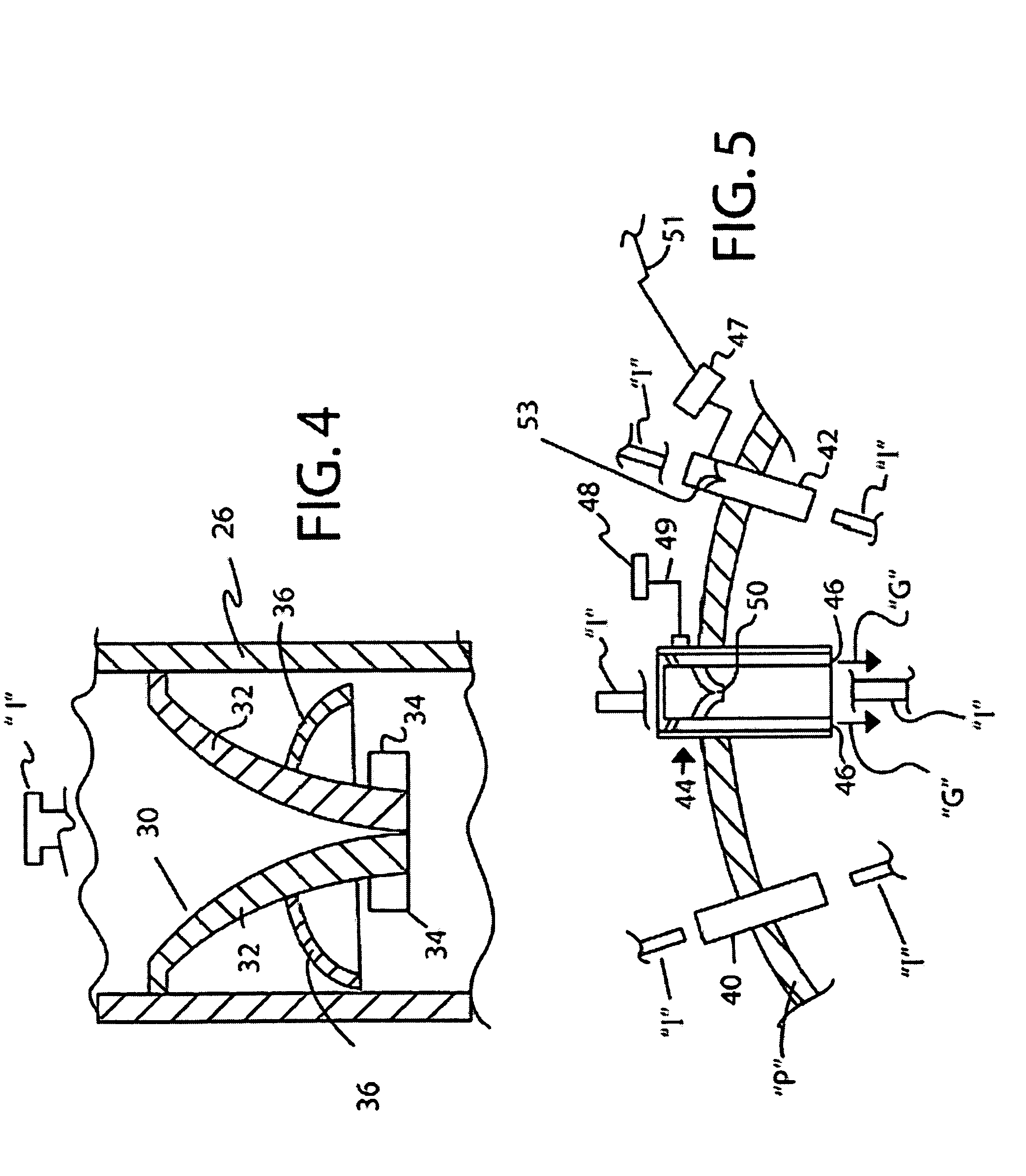Pneumoseal trocar arrangement
a trocar arrangement and pneumococcal technology, applied in the field of pneumococcal trocar arrangement, can solve the problems of surgically inappropriate partial obstruction of the current dual mechanical valve cannula of the prior art, and achieve the effects of reducing the volume of lost gas, increasing the efficiency of a multiple cannula system, and reducing the loss of distension gas
- Summary
- Abstract
- Description
- Claims
- Application Information
AI Technical Summary
Benefits of technology
Problems solved by technology
Method used
Image
Examples
Embodiment Construction
[0026]The present invention comprises in a first aspect thereof, a proximal cap 10, as shown in FIG. 1, arranged for securable attachment to the proximal end of a cannula 12, which comprises a trocar assembly 14 of the present invention. The cap 10 may have a flexible flap, slit or “duckbill” type valve 16 fitted therein. The cap 10 is preferably of cylindrical shape and has a distal edge 18. A plurality of inwardly directed spurs 20 are arranged within the distal edge 18 of the cap 10, as shown in FIGS. 1 and 2. The spurs 20 are circumferentially spaced so as to mate with and lock into a plurality of receiving grooves 22 in a “bayonet” manner on the proximal periphery of the cannula 12, as represented in FIG. 3. An operative surgical instrument “I” would then be introduced through this proximal valve 16 on the cannula 12. The valve 16 may in a further embodiment, have a soft compressable “O” ring 24 unitarily arranged about its proximal periphery, as represented in FIG. 1. The O-ri...
PUM
 Login to View More
Login to View More Abstract
Description
Claims
Application Information
 Login to View More
Login to View More - R&D
- Intellectual Property
- Life Sciences
- Materials
- Tech Scout
- Unparalleled Data Quality
- Higher Quality Content
- 60% Fewer Hallucinations
Browse by: Latest US Patents, China's latest patents, Technical Efficacy Thesaurus, Application Domain, Technology Topic, Popular Technical Reports.
© 2025 PatSnap. All rights reserved.Legal|Privacy policy|Modern Slavery Act Transparency Statement|Sitemap|About US| Contact US: help@patsnap.com



